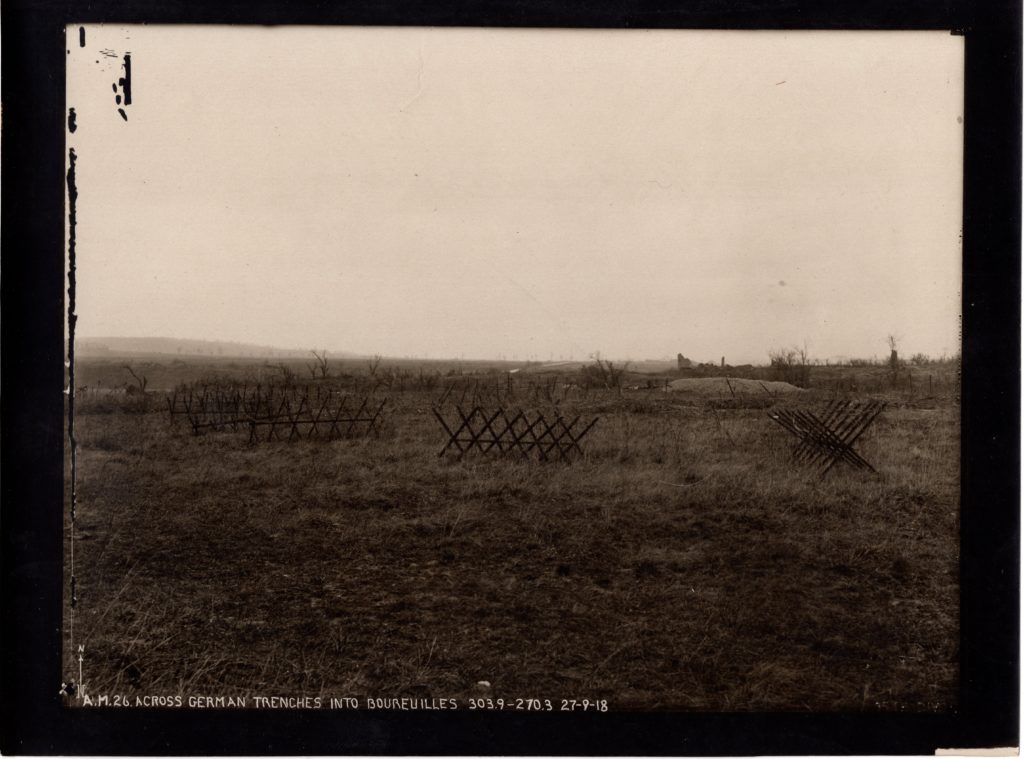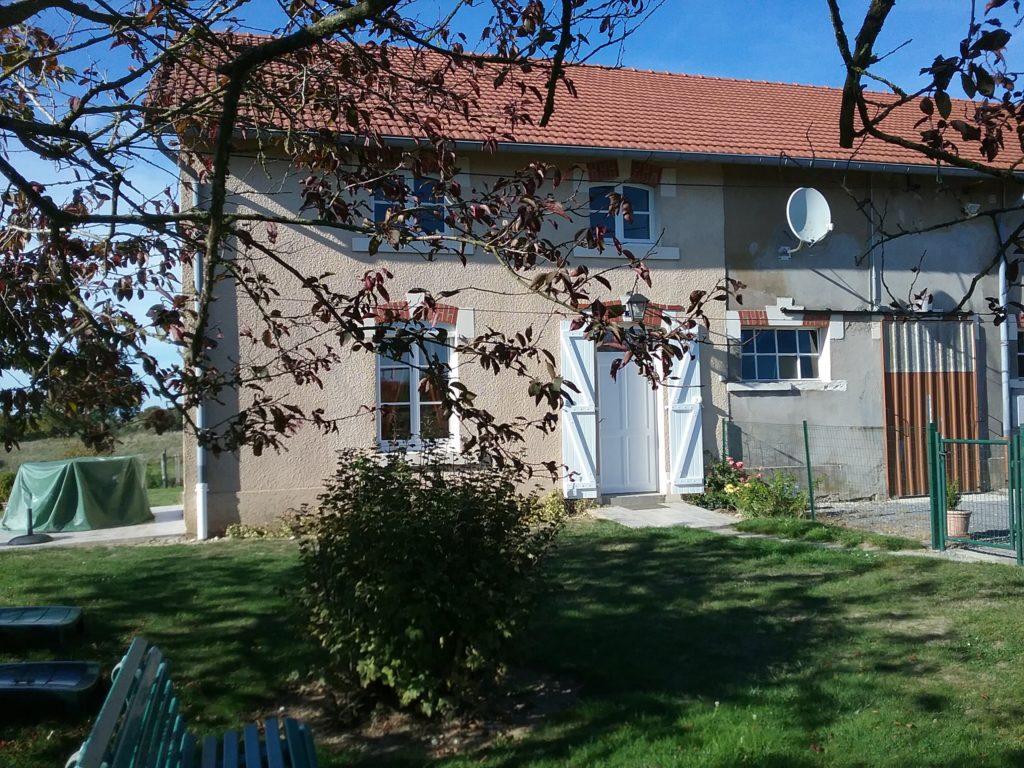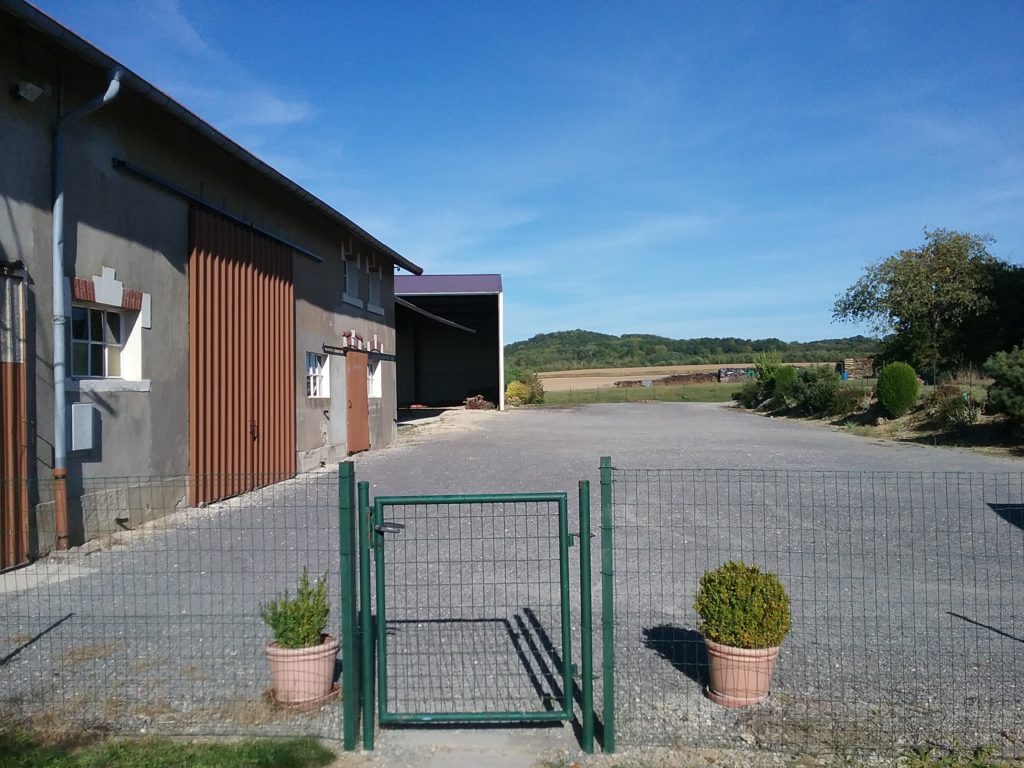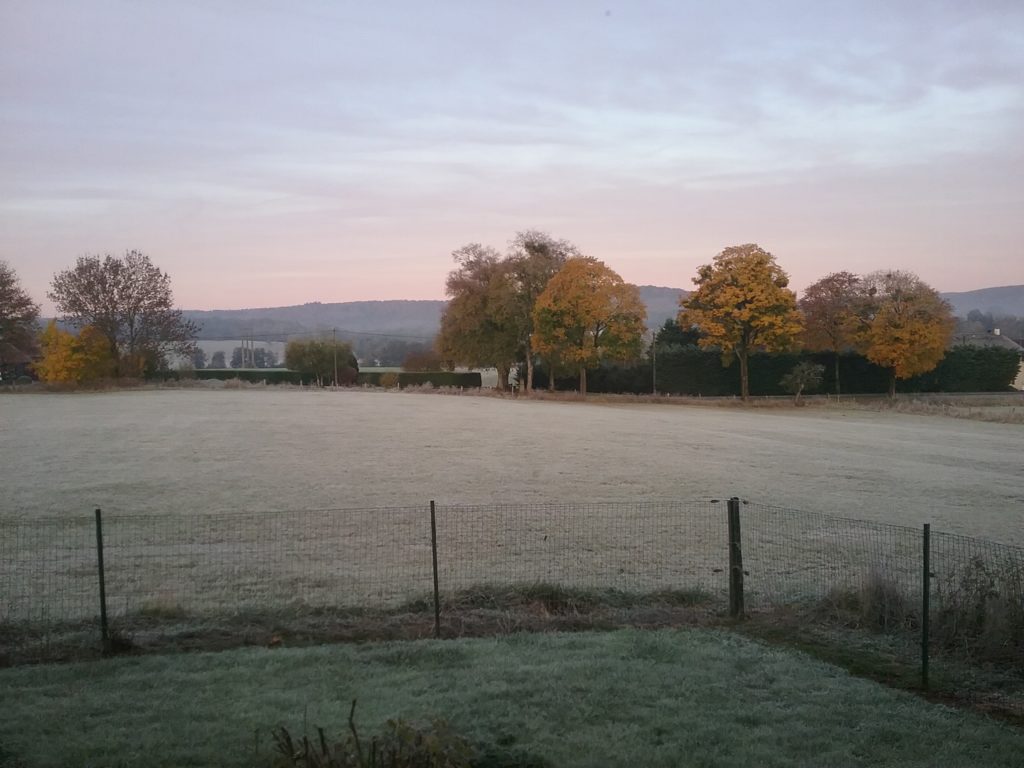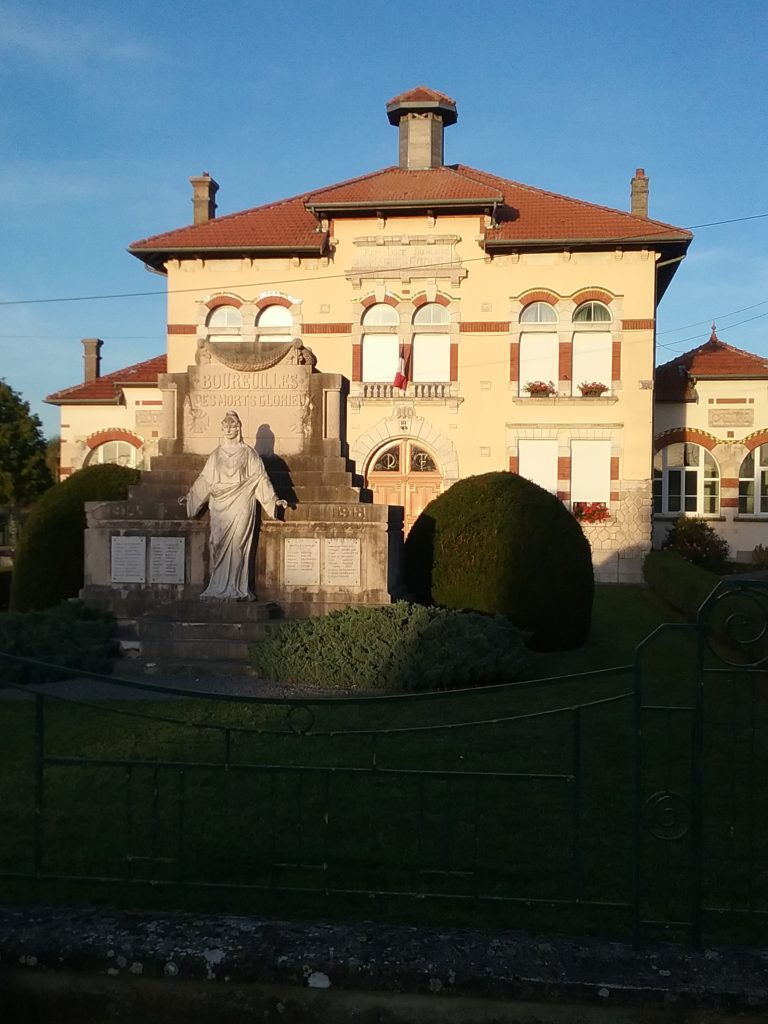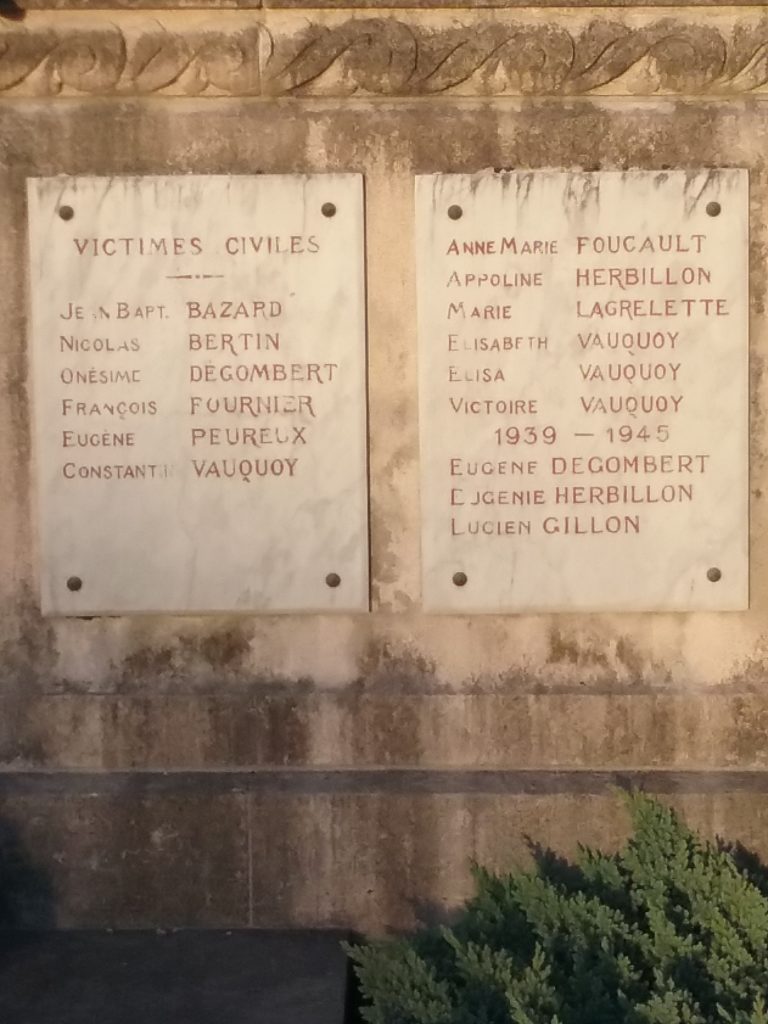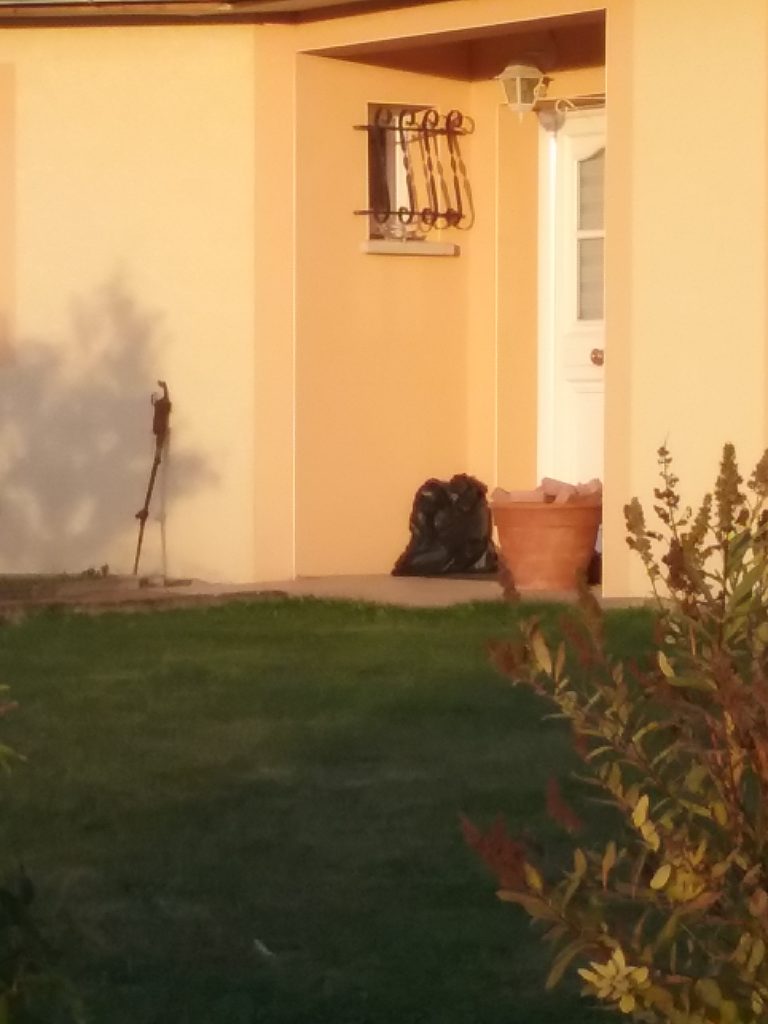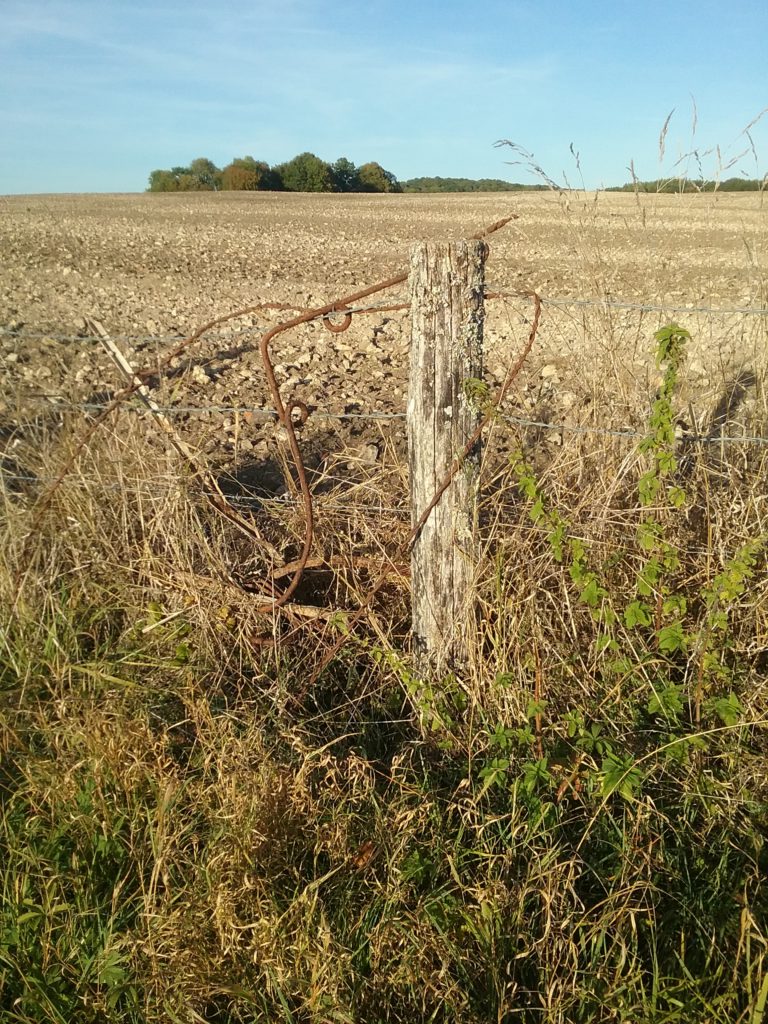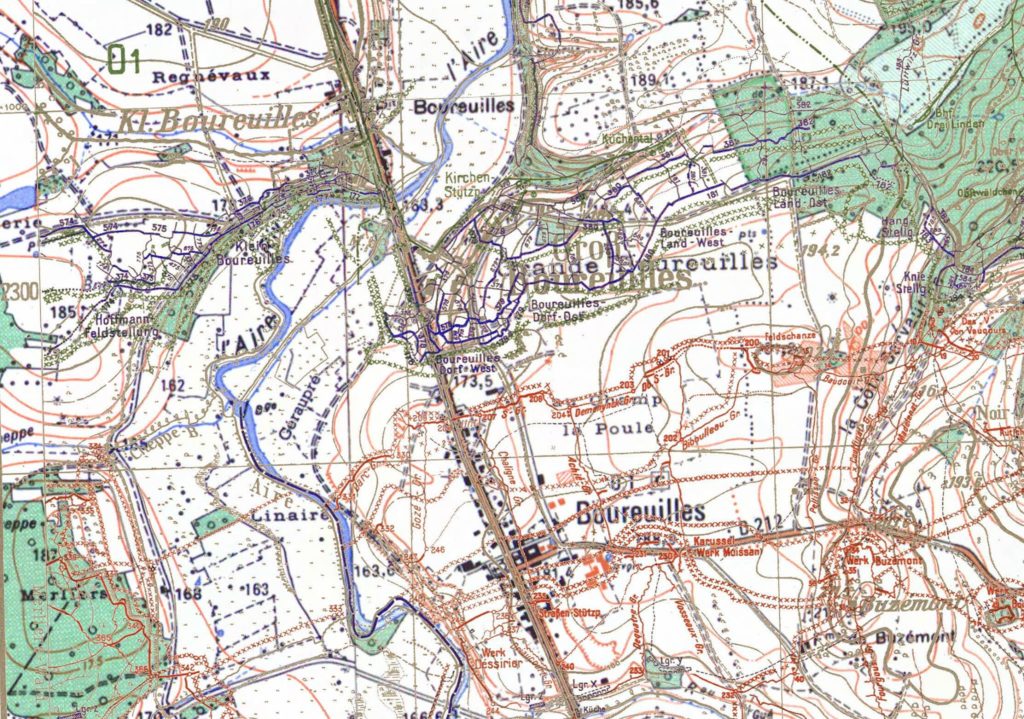What a difference a year makes! Last year, the Webmaster rented a gite in “The Punchbowl” of Doulcon for six months. Doulcon was liberated by the 5th Division on 3 November, 1918–quite late in the Meuse-Argonne Offensive. This year the Webmaster is renting the “Gite les Rosiers” in Boureuilles. This gite is basically on the 28th and 35th Division jump-off line of 26 September–just a few kilometers south of Varennes-en-Argonne. Said another way, the front-line of 26 Sept. ran east-west from Vauquois Hill (about 3km / 2 mi away), through Boureuilles, to the hills of the Argonne Forest. For a WW1 historian, the location is perfect–unless one is haunted by ghosts.
Griffin Group Photo AM-26, “Across German Trenches into Boureuilles”
Like so many towns in the region, Boureuilles ceased to exist as a result of its location on the front lines. Historically, Petit Boureuilles was a smallish community north of where the Aire River crossed the road to Varennes and Grand Boureuilles was the larger community south of the Aire River. There is still a handful of houses north of the River, but on today’s map there is just “Boureuilles” and that town was rebuilt in the 1920s a few hundred meters south of where the original town stood.
The most difficult thing about living here has been pronouncing the name so that the French understand where one is living. The Webmaster’s French accent is not good anyway, but the collection of vowel combinations makes this a fun name to pronounce. Something like Booh – Roy (rolling the R) is close, but not perfect:-)
This year’s gite is a good bit smaller and not as well-equipped, but the location makes up for it.
Looking east toward Vauquois Hill.
Looking west toward the Argonne Forest in late October.
The mairie (town hall) with its obligatory war memorial.
The webmaster has often wondered about the civilian victims listed on local war memorials: Were they citizens who did not flee the fighting quickly enough? Were they killed fighting or resisting the Germans? Were they thought to be spies? Did they die of starvation? Whatever the reason, there are several listed here.
As one would expect, signs of the Great War are still abundant today. A French local has the remains of a rifle resting against his house.
A barbed wire screw picket (aka pig tail) rests on a farmer’s fence just outside of town. Presumably, it was situated in the field.
Map showing Boureuilles “Then and Now” including the front lines prepared by Stefan Schweitzer, who maintains a wonderful website (in German) entitled Morthomme.
